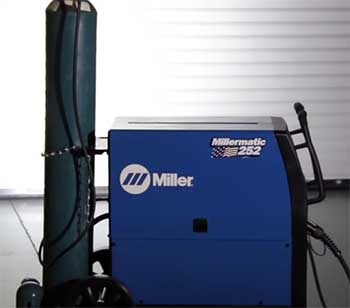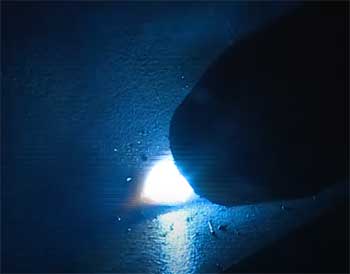Let me tell you why you need to grab the Saker Portable Welding Machine right now. Imagine having a lightweight, powerful tool that fits in your hand, ready to tackle any small welding job around the house or shop.
I’ve been tinkering with this bad boy, and it’s a game-changer for DIY enthusiasts like us. Whether you’re fixing a metal chair or patching up a fence, this welder promises ease, portability, and solid performance—all at a price that won’t break the bank.
Trust me, you’ll want this in your toolbox before your next project sneaks up on you.
My Experience With The Saker Portable Welding Machine
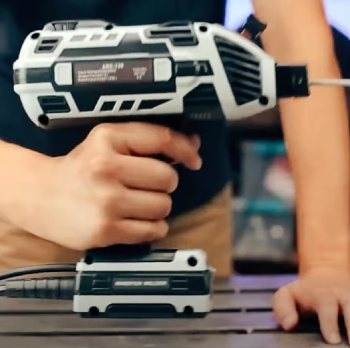
Picture this: it’s a crisp Saturday morning, and I’m tearing into the box of my brand-new Saker Portable Welding Machine like a kid on Christmas.
I’d read a bunch of reviews beforehand, so my expectations were sky-high.
Spoiler alert—it didn’t disappoint.
I’m no professional welder, just a guy who likes fixing stuff around the house, but this thing made me feel like I could hang with the big dogs.
First off, it’s tiny. I mean, at just 3.3 pounds, it’s lighter than my old cordless drill.
I grabbed it with one hand, plugged it into my garage outlet, and decided to test it on some scrap metal I had lying around—an old piece of 16-gauge stainless steel and a chunk of 1/8-inch angle iron.
I popped in a 3/32-inch 6011 rod, adjusted the current to about 80 amps using that handy 5-speed knob, and got to work. The arc sparked up smooth as butter, no fumbling or frustration.
I ran a full 6-inch bead on the angle iron, and the penetration was impressive—deep and clean, like the metal was begging to be fused together. On the stainless, I did a few spot welds with some stainless rods, and after a quick cleanup, they looked sharp.
What struck me most was how easy it was to control. I’ve used bigger welders before, and they always felt like overkill for small jobs. With the Saker, I could maneuver it without breaking a sweat. One time, I got too close, and the rod stuck to the metal—panic mode, right?
Nope.
I just let go of the trigger, and it popped free with zero hassle. My buddy stopped by to check it out, and even he—Mr. “I’ve Welded Everything”—gave it a thumbs-up after laying down a bead. We both agreed: for quick fixes or small projects, this thing’s a winner.
The only gripe? The ground wire and power cord could stretch a bit longer. Still, it’s earned a permanent spot in my traveling tool kit.
Pros of The Saker Portable Welding Machine
- Lightweight and Portable Design
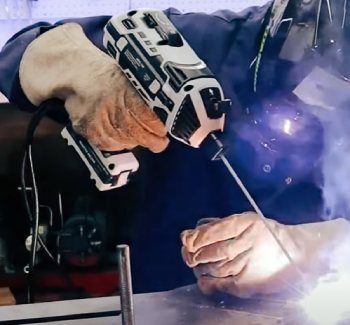
You know what I love most about this welder?
It’s so light I can carry it anywhere without feeling like I’m lugging around a boat anchor.
At 3.3 pounds and under 10 inches long, it’s perfect for squeezing into tight spots or tossing in your car for an on-the-go repair.
I’ve hauled it out to the backyard to fix a wobbly fence post, and it didn’t even make me break a sweat.
Compared to those clunky traditional welders, this feels like a feather.
- Easy to Use for Beginners
If you’re new to welding—like I was when I started—this machine’s got your back. The plug-and-play setup means you’re not fiddling with a million settings just to get started. That 5-speed knob for adjusting the 20-120 amp output?
It’s a breeze to tweak until you find the sweet spot for your project. My first weld wasn’t perfect, but the hot arc start feature made striking the arc so smooth that I felt like a pro by my third try. It’s forgiving, which is exactly what you need when you’re just figuring things out.
- Versatile Rod Compatibility
Here’s where it gets fun: the Saker handles welding rods from 3/32-inch to 1/8-inch like a champ. I’ve used 6011 rods for rougher jobs and switched to stainless rods for finer work, and it didn’t miss a beat.
That flexibility means you’re not stuck with one type of metal or thickness. Whether I’m patching thin sheet metal or beefier angle iron, this welder adjusts and delivers. It’s like having a Swiss Army knife for welding.
- Solid Weld Quality
Don’t let the size fool you—this little guy packs a punch. The welds I’ve laid down have great penetration and hold strong. On that 1/8-inch angle iron, the bead was deep and sturdy, and even on thinner stainless, it fused everything together without burning through.
Sure, there’s a bit more spatter than my bigger inverter welder, but nothing a quick brush can’t fix. For the price and portability, the quality’s tough to beat.
- Safety Features That Work
I’m all about not frying myself, and the Saker’s got some smart safety tricks up its sleeve. The 360° cooling system keeps it from overheating, even when I pushed it through a few long welds.
Plus, the overheat protection kicked in once when I got a little too ambitious, shutting things down before any damage happened. It’s stable, reliable, and lets me focus on the job without worrying about the machine blowing up in my face.
Cons of The Saker Portable Welding Machine
- Limited Power for Big Jobs
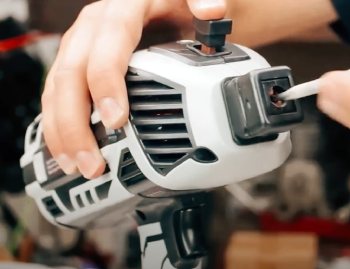
Let’s be real—this isn’t the welder you’re taking to build a skyscraper.
With a max output of 120 amps, it’s awesome for small to medium tasks, but it starts to struggle with thicker metals or long, continuous welds.
I tried pushing it on a 1/4-inch plate, and while it got the job done, it wasn’t happy about it.
If you’re into heavy-duty projects, you might need to look elsewhere.
- Short Cables
I mentioned this earlier, but it’s worth repeating: the ground wire and power cord are a bit stingy. When I was welding in the backyard, I had to drag an extension cord out because the stock cables wouldn’t reach.
It’s not a dealbreaker, but it’s annoying when you’re trying to work in a bigger space. A few extra feet would’ve made life a lot easier.
- Not Ideal for Extended Use
This welder’s a sprinter, not a marathon runner. I noticed that after about 15 minutes of steady use, it started getting warm, and the duty cycle felt like it was tapering off.
For quick repairs, it’s golden, but if you’re planning an all-day welding session, you might find it begging for a break. It’s built for portability, not endurance.
- Spatter Can Be a Hassle
Compared to my bigger inverter welder, the Saker throws a bit more spatter. It’s not a huge mess, but I had to spend extra time cleaning up after welding on stainless steel.
If you’re after super-clean welds right out of the gate, you might need to tweak your technique or accept a little post-weld cleanup.
Maintenance Tips For The Saker Portable Welding Machine
- Keep It Clean and Dust-Free: You wouldn’t let your favorite tools get gunked up, right? Same goes for the Saker. After every use, I grab a soft brush and wipe down the exterior to keep dust and metal shavings out of the vents. That air intake and cooling system are what keep it running smooth, so don’t let them clog up. A quick once-over takes two minutes and saves you headaches down the road.
- Check the Cables Regularly: Those short cables I grumbled about? They’re still your lifeline, so give them some love. I inspect mine every few uses for frays or cuts—especially where they bend near the machine. If you spot any damage, swap them out pronto. A bad ground wire can mess up your welds faster than you can say “spark.”
- Store It Properly: When I’m done welding, I don’t just toss the Saker in a corner. I coil the cables loosely and stash it in a dry spot in my garage. Moisture’s the enemy here—rust can creep into the internals and ruin your day. If you’re keeping it in your car trunk, maybe throw it in a plastic bin to shield it from the elements.
- Monitor the Cooling System: That 360° cooling tech is slick, but it’s not invincible. Every few months, I peek inside the vents (with the power off, of course) to make sure nothing’s blocking the airflow. If it starts feeling hotter than usual during use, give it a rest and check for buildup. Keeping it breathing easy means it’ll last you longer.
- Use the Right Rods and Settings: This one’s simple but huge: match your rods and current to the job. I stick to 3/32-inch rods for thinner stuff and bump up to 1/8-inch for heavier metal, tweaking the amps as I go. Overloading it with too much current or the wrong rod size stresses the machine. Treat it right, and it’ll treat you right back.
Comparison of Saker Portable Welding Machine With Other Brands
- Saker Vs. Lincoln Electric
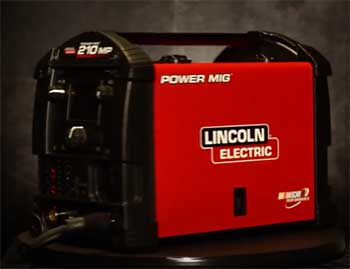
Lincoln Electric’s welders are the gold standard—think of them as the heavy-duty pickup trucks of the welding world.
I’ve used their stick welders before, and they’re beasts for big jobs, pumping out higher amps and running all day without a hiccup.
But here’s the catch: they’re bulky and pricey.
The Saker, on the other hand, is like a zippy little coupe—perfect for quick fixes and tight spaces.
You’re trading raw power for portability, and for my home projects, that’s a win.
- Saker Vs. Hobart
Hobart’s got a killer lineup, especially their MIG welders, which I’ve always admired for clean, consistent welds. They’re awesome if you’re into automotive work or need something versatile with gas options.
The Saker sticks to stick welding (pun intended), and while it can’t match Hobart’s finesse on thin sheet metal, it’s way easier to haul around. I’d pick Hobart for a dedicated shop setup, but the Saker’s my go-to for grab-and-go repairs.
- Saker Vs. Harbor Freight Options
Harbor Freight’s welders—like their Titanium or Vulcan lines—are budget-friendly and surprisingly decent. I’ve tinkered with their 120-amp stick welder, and it’s solid for the price, with a bit more oomph than the Saker.
But it’s heavier and less intuitive for newbies. The Saker edges out with its one-handed design and simpler controls. If you’re after dirt-cheap power, Harbor Freight’s tempting, but I’d still take the Saker’s portability any day.
- Saker Vs. Miller
Miller welders are the Ferraris of the game—pricey, powerful, and built to last. Their portable inverters blow the Saker out of the water for pro-grade work, with smoother arcs and higher duty cycles. But for a casual user like me, that’s overkill.
The Saker’s cheaper, lighter, and does the trick for small jobs without making me feel like I’m wrestling a beast. It’s practical versus premium—your call based on your wallet and workload.
Frequently Asked Questions (FAQ)
From my time with it, yeah, it’s pretty darn good! It’s not going to replace a pro-grade welder, but for DIY fixes around the house or shop, it’s a solid performer. The welds are strong, it’s easy to use, and that portability is clutch. If you’re after something simple and affordable for small projects, you’ll be happy with it.
Think about what you need it for. I picked the Saker because I wanted something lightweight for quick jobs—check the weight and size first. Then, look at the power output; 20-120 amps works for me on thinner metals. Make sure it supports the rods you’ll use, and don’t skip on safety features like cooling or overheat protection. Match it to your skill level and projects, and you’re golden.
Okay, this is a curveball since the Saker’s not ultrasonic, but I’ll bite. Ultrasonic welders, which use high-frequency vibrations, are awesome for plastics or super-thin metals, but they’re picky. A big downside? They struggle with thicker or dissimilar materials—something I’d never worry about with my Saker’s stick welding setup. They’re also crazy expensive, so not exactly DIY-friendly.
Test it out like I did with the Saker. Look at your welds—are they penetrating deep and holding strong? Is the arc stable, or does it flicker like a bad light bulb? Check if it’s easy to use and doesn’t overheat too fast. If it fits your projects and doesn’t leave you cursing, you’ve got a keeper. For me, the Saker checks those boxes for small-scale stuff.
Wrapping Up
So, here’s the deal: if you’re on the fence about the Saker Portable Welding Machine, just go for it. I’ve had a blast using it for everything from fixing furniture to patching up random metal bits, and it’s proven its worth.
It’s affordable, portable, and punches above its weight for small jobs. You don’t need to be a welding wizard to make it work—just plug it in and start creating. Grab one, and I bet you’ll wonder how you ever managed without it.
